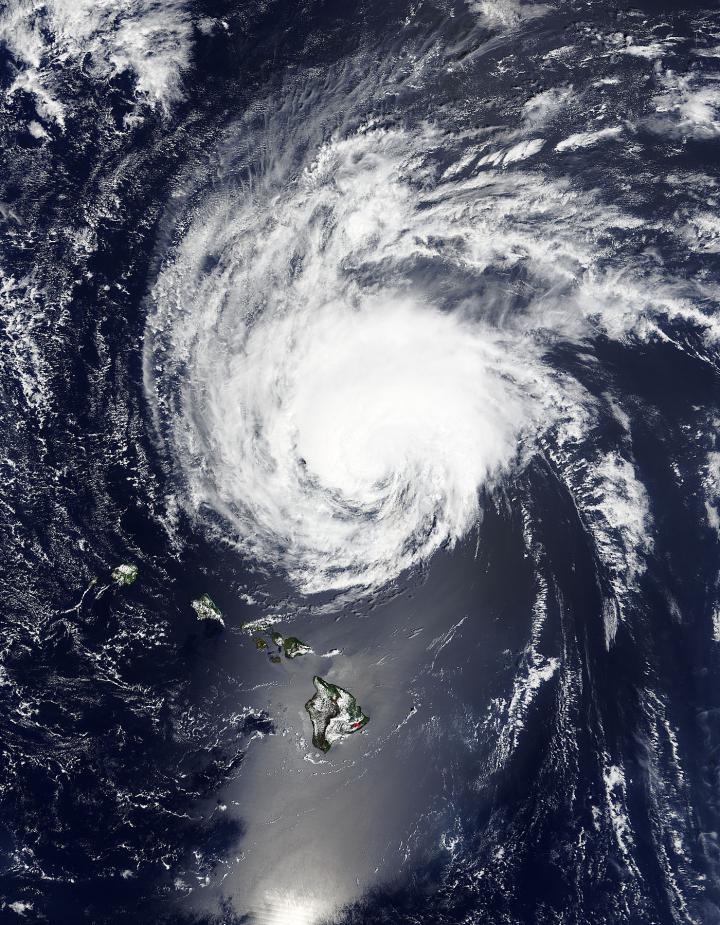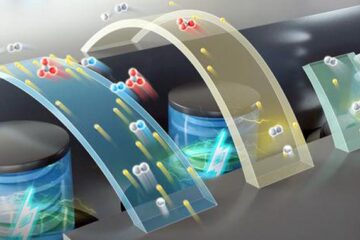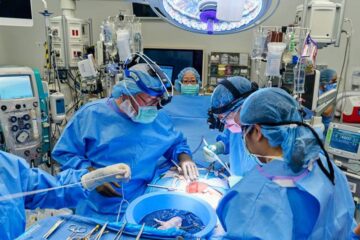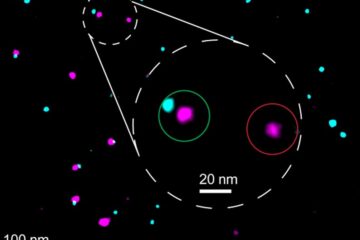NASA sees a weaker Tropical Storm Ignacio north of Hawaiian Islands

On Sept. 1 at 21:10 UTC the MODIS instrument aboard NASA's Terra satellite captured this image of Tropical Storm Ignacio near Hawaii. Credits: NASA Goddard MODIS Rapid Response Team
Late on August 31 at 11 p.m. EDT the RapidScat instrument that flies aboard the International Space Station observed Ignacio's strongest winds surrounded the center of storm near 30 meters per second (108 kph/67 mph). Those winds weakened over the next 36 hours.
At 21:10 UTC (5:10 p.m. EDT) the MODIS instrument aboard Terra captured a visible image of Tropical Storm Ignacio well north of the Hawaiian Islands. As the storm weakened from a hurricane to a tropical storm, the eye was no longer visible.
At 11 a.m. EDT on September 2, there are no coastal watches or warnings in effect for Hawaii as Ignacio passing well north of the main Hawaiian Islands.
There was no eye visible on satellite imagery, but the center of the storm was indicated by a “warm spot” on infrared imagery that stood out from the colder cloud top temperatures of the thunderstorms surrounding Ignacio's center. Those thunderstorms, however, had weakened since the previous day.
The center of Tropical Storm Ignacio was located near latitude 26.1 north and longitude 157.1 west. That's about 335 miles (540 km) north of Honolulu.
Ignacio was moving toward the northwest near 12 mph (19 kph) and the storm is expected to turn to the north-northwest late on September 3. Maximum sustained winds were near 70 mph (110 kph) and slow weakening is expected starting on Thursday, September 3.
Media Contact
All latest news from the category: Earth Sciences
Earth Sciences (also referred to as Geosciences), which deals with basic issues surrounding our planet, plays a vital role in the area of energy and raw materials supply.
Earth Sciences comprises subjects such as geology, geography, geological informatics, paleontology, mineralogy, petrography, crystallography, geophysics, geodesy, glaciology, cartography, photogrammetry, meteorology and seismology, early-warning systems, earthquake research and polar research.
Newest articles

High-energy-density aqueous battery based on halogen multi-electron transfer
Traditional non-aqueous lithium-ion batteries have a high energy density, but their safety is compromised due to the flammable organic electrolytes they utilize. Aqueous batteries use water as the solvent for…

First-ever combined heart pump and pig kidney transplant
…gives new hope to patient with terminal illness. Surgeons at NYU Langone Health performed the first-ever combined mechanical heart pump and gene-edited pig kidney transplant surgery in a 54-year-old woman…

Biophysics: Testing how well biomarkers work
LMU researchers have developed a method to determine how reliably target proteins can be labeled using super-resolution fluorescence microscopy. Modern microscopy techniques make it possible to examine the inner workings…





















